

Catch Fish with
Mike Ladle
Information Page
SEA FISHING
For anyone unfamiliar with the site always check the FRESHWATER, SALTWATER and TACK-TICS pages. The Saltwater page now extends back as a record of over several years of (mostly) sea fishing and may be a useful guide as to when to fish. The Freshwater stuff is also up to date now. I keep adding to both. These pages are effectively my diary and the latest will usually be about fishing in the previous day or two. As you see I also add the odd piece from my friends and correspondents if I've not been doing much. The Tactics pages which are chiefly 'how I do it' plus a bit of science are also updated regularly and (I think) worth a read (the earlier ones are mostly tackle and 'how to do it' stuff).
Bass Bonanza!
For quite a few years, with my pals Bill and Nigel, I have been fishing along the Purbeck coast. We each have our own approaches to what we do, but a several times each year, when the tides, weather, time of day and condition of the maggoty weed middens seem just right, we try to get together and hike to a suitable spot for a communal bass/mullet fishing exercise. The trick is to predict that a high spring tide (1.9m+) will coincide with sufficient surf and enough Coelopa infested weed to cause a raft of mullet/bass food on the surface of the sea. These events can be tricky to predict but when everything comes together there can be hundreds or even thousands of mullet, skimming the surface for the tiny white larvae. Mullet and bass will both enjoy a maggot-fest but the proportions of the two species present vary a lot and the mullet are far more conspicuous feeders (and very reluctant to take spun bass lures).
Recently, on a 2m spring-tide, there was a moderate longshore breeze, and we thought that there would be weed deposits on the high water mark so we got together and gave it a go. On arrival at our chosen stretch of shore, a couple of hours before high water, it looked a bit doubtful. As we'd optimistically trudged on our longish walk to the supposed 'hot spot' there was no sign of a fish, of any species, and although our arrival disturbed a few black-headed gulls (always a good indicator of maggot-feeding fish) the birds were simply picking about on the shoreline. Where the waves were breaking, close in, there was often two or three metres of clingy, weed soup in the edge. This was no real problem for our spinning tactics apart from having to clear a bit of crap from the line and lure every few casts.
Each of us was armed with a spinning rod and a soft-plastic, weedless lure of our choice. We spread out along a fifty metre stretch and began to fish. Within a few minutes of starting to cast Nigel was the first to have a bend in his rod, and we saw him slide a modest bass ashore. It wasn't long before Bill also landed a bass and although I had missed a couple of knocks it was still zero fish for me. Within a further ten or fifteen minutes the mullet had arrived in force and were skimming the surface. Of course, the thicklips expressed no interest in our lures, but there were clearly a fair number of bass in the mix and we all started to catch fish of two or three pounds with reasonable frequency. The odd specimen was a little larger or smaller but we were all landing bass fairly regularly. The action was only interrupted by replacing the odd lost lure or by pausing to unhook fish and to take a few pictures.
A good bass for Bill.
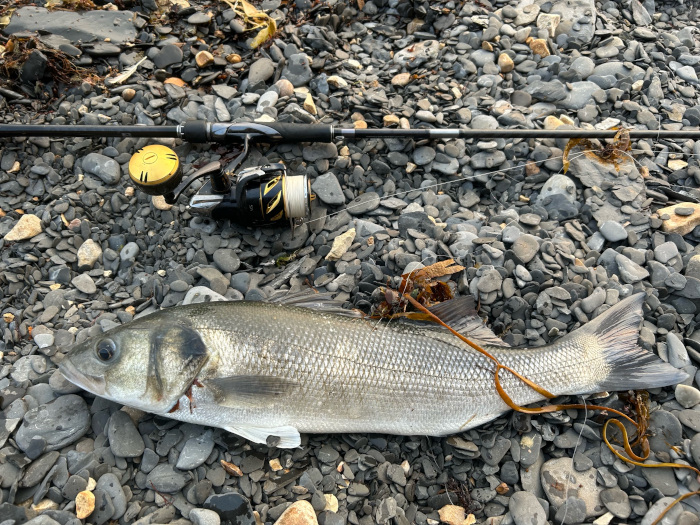
We sometimes measured the larger ones.
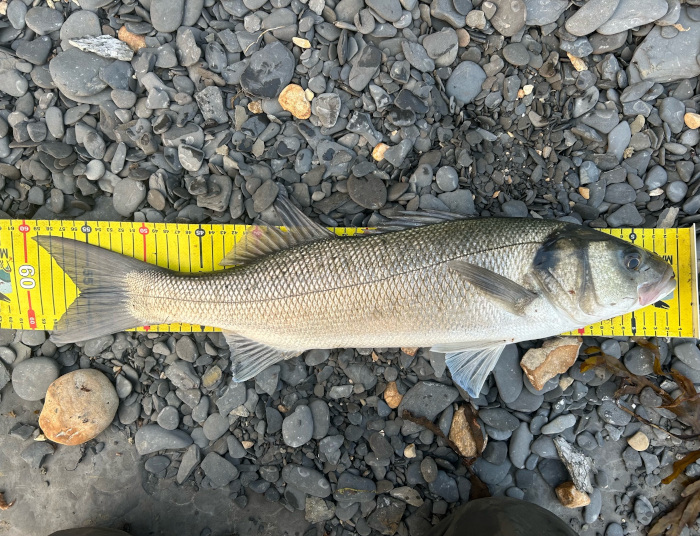
... and a picture before one of Bill's better fish goes back to the sea.
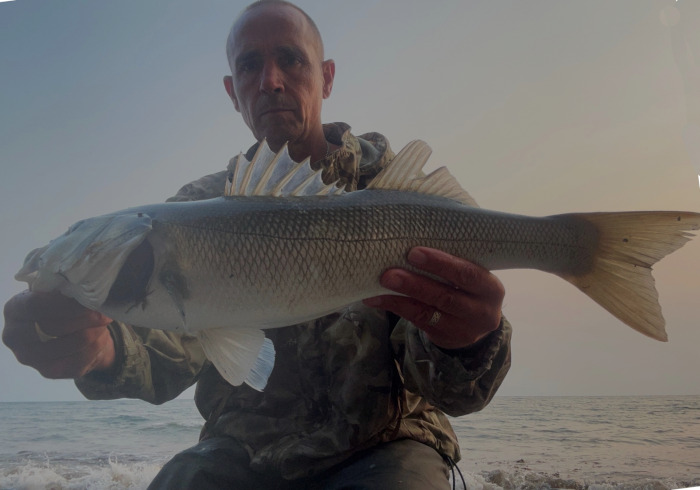
It was now approaching high water and the fish were still coming thick and fast. On one occasion all three of us were playing bass at the same time. We noticed that the wind and the waves had dropped slightly. Almost simultaneously, without discussion, Nigel and I put down our spinning rods and picked up the fly gear - it now definitely looked possible to cast a fly without constantly battling with the loose weed. Our flies were similar, small, white, Delta eels. Within minutes we were into fish. Nigel's first was a mullet - the only one we had in the session. Then bass after bass took our plastic 'flies'.
Nigel and I switched to fly fishing, in the slightly calmer conditions, round about high water.
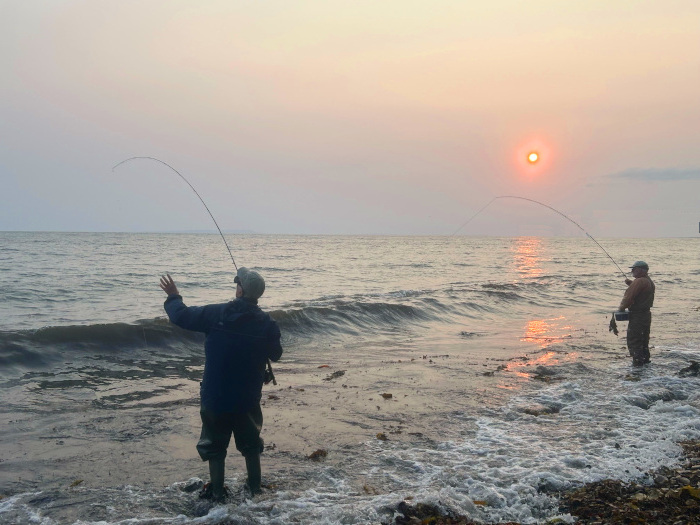
Nigel bent into one of the many bass that took our 'flies'.
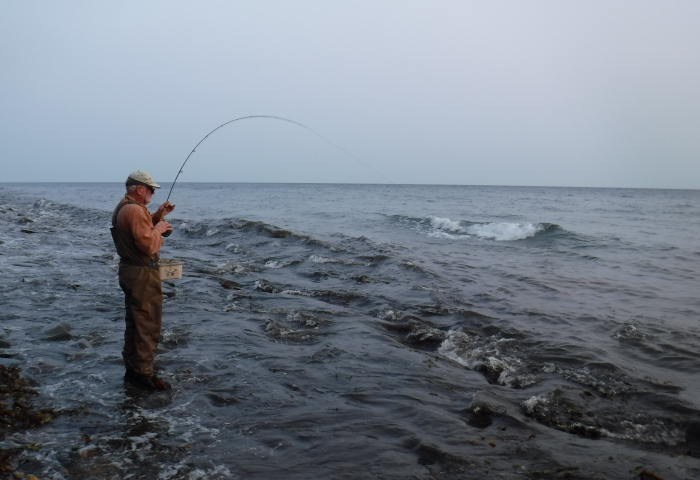
Slid ashore and ready to unhook.
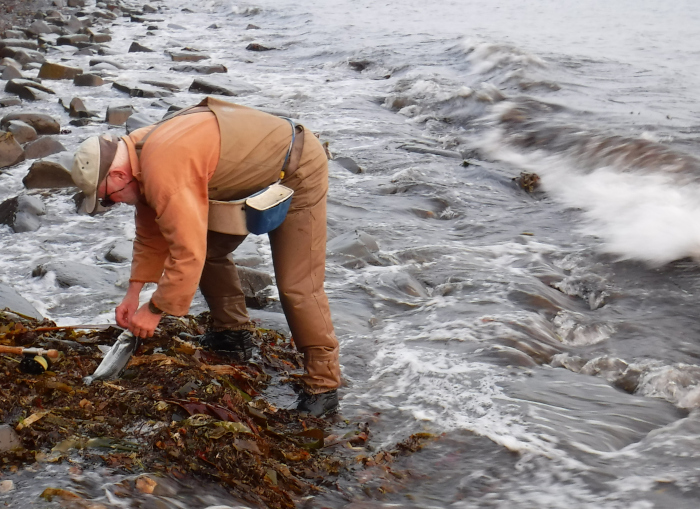
One of my fly-caught bass. In my opinion, much more than equal (in enjoyment) to catching any trout.
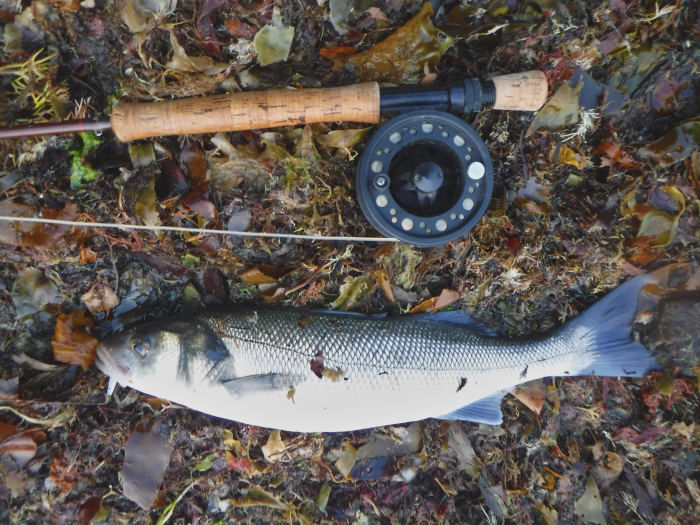
A close up showing the eye and head of the little but effective plastic fly..
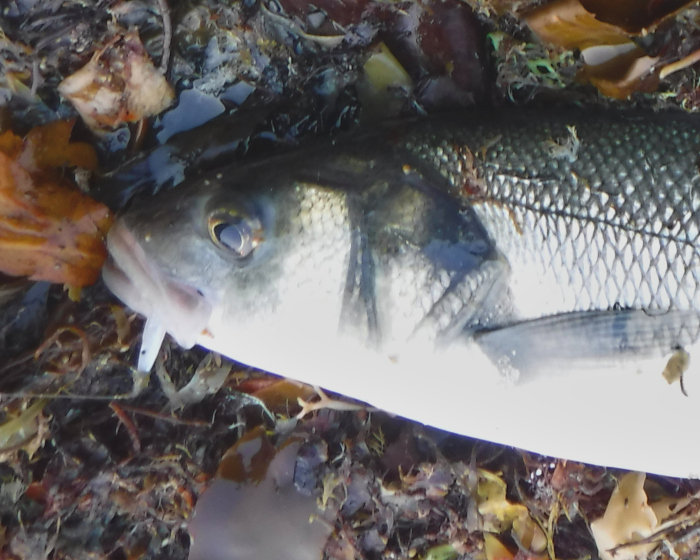
We packed in just after high water - not because the fish had gone but we simply decided that we'd caught enough for one session. Our total was about seventy bass between us. Roughly thirty of these and one mullet fell to Nigel. Bill and I had about twenty bass each. As far as we could tell the nature of the softbaits used didn't make much difference. The density of fish, number of bites, and quantity of bass caught seemed to differ with our relative positions along the shoreline. Switching to the smaller lures on the fly gear almost certainly resulted in more frequent hook-ups, and in perhaps a quarter of the fishing time I landed equal numbers of fish by fly fishing as I had by spinning. All in all a pretty good evening's fishing.
PLEASE TELL YOUR TWITTER (X), FACEBOOK, EMAIL FRIENDS ABOUT THESE BOOKS.
THE SECOND WAVE

Written with Steve Pitts this is a SEQUEL TO THE BESTSELLER "Operation Sea Angler" IT'S AVAILABLE ON PAPER FROM -
HOOKED ON BASS
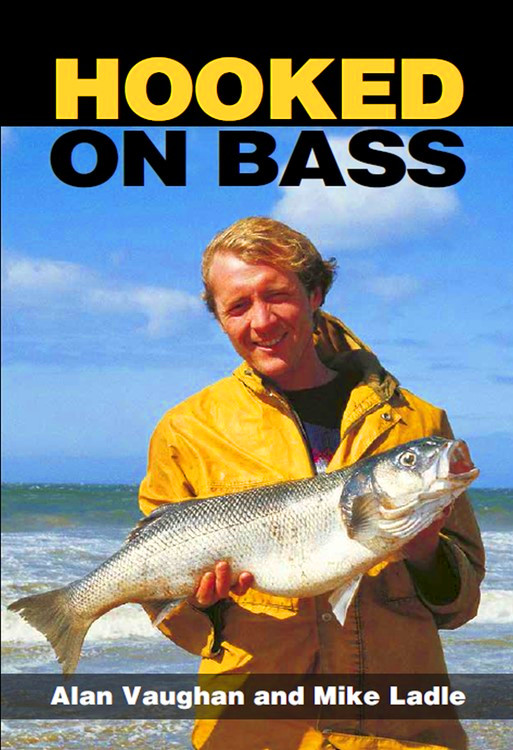
Written with Alan Vaughan. NEW PRINT OF THE ORIGINAL: IN PAPERBACK. Copies available from all good book shops RRP 14:99 -
ANGLING ON THE EDGE
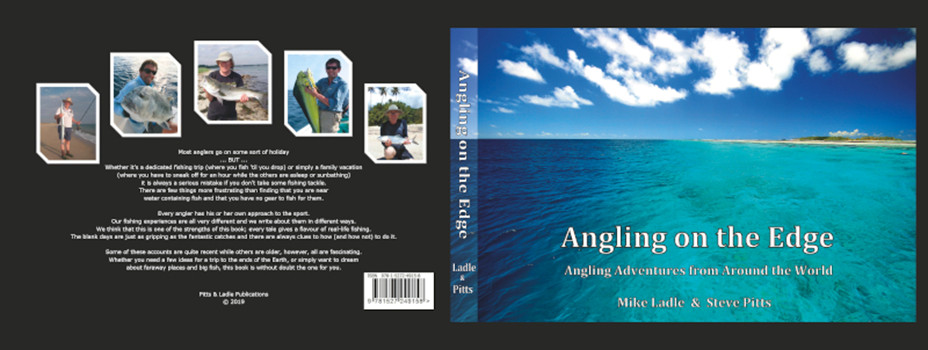
Copies can now be ordered (printed on demand) from Steve Pitts at 34.00, inc. Royal Mail Insured UK Mainland Postage.
To order a book send an E-MAIL to - stevejpitts@gmail.com
FISHING FOR GHOSTS
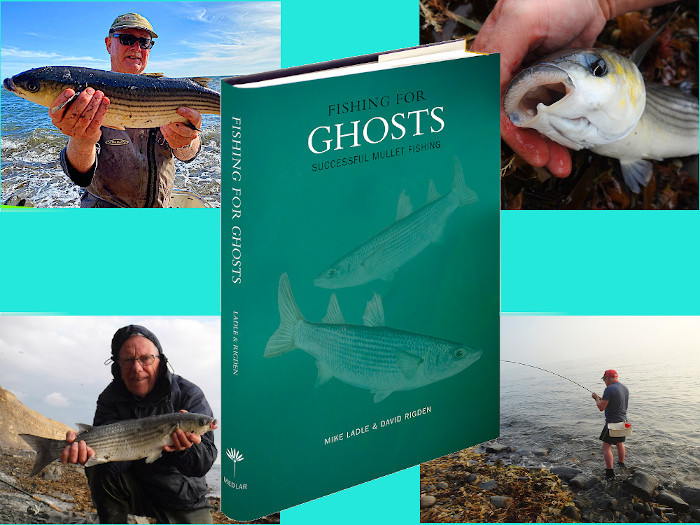
Written with David Rigden. Copies from
If you have any comments or questions about fish, methods, tactics or 'what have you!' get in touch with me by sending an E-MAIL to - docladle@hotmail.com